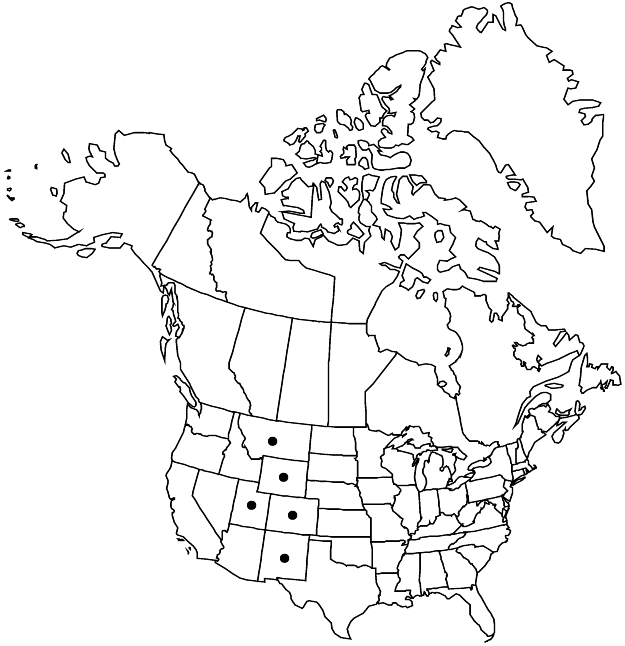Saxifraga debilis
Proc. Acad. Nat. Sci. Philadelphia 15: 62. 1864,.
Plants usually densely tufted, sometimes loosely so, not stoloniferous, not rhizomatous. Leaves basal and cauline, (3–5, proximal similar to basal); petiole ± flattened, 5–70 mm; blade round or reniform, (3–)5–7-lobed (lobes obtuse), (3–)4.5–6.7(–10.3) mm, slightly fleshy, margins entire, eciliate, surfaces glabrous. Inflorescences 2–3(–5)-flowered, capitate cymes, sometimes solitary flowers, (flowers subsessile), (3–)6.7–9(–19.4) cm, tangled, nonglandular-hairy; bracts petiolate. Flowers (hypanthium V-shaped in longisection, glabrous or sparsely short stipitate-glandular); sepals erect, oblong to ovate, (0.7–1 mm wide), margins eciliate, surfaces abaxially glabrous; petals white to pale purple, not spotted, oblong, (1.7–)3–4.4(–6.2) mm, ± equaling sepals; ovary 1/2 inferior. 2n = 26.
Phenology: Flowering summer.
Habitat: Alpine meadows, snow beds, open gravel and silt, seepage areas, stream and lake margins, shady taluses, ravines or cliffs
Elevation: 2500-4000 m
Distribution

Colo., Mont., N.Mex., Utah, Wyo.
Discussion
Saxifraga debilis is known only from the central and southern Rocky Mountains, where it is often called S. rivularis (a species not present in the area). Its V-shaped (in longisection), glabrous or sparsely short stipitate-glandular hypanthia, and larger, more-lobed leaves (similar to S. bracteata in this) distinguish it from S. hyperborea, which is sometimes sympatric (M. H. Jørgensen et al. 2006).
Selected References
None.